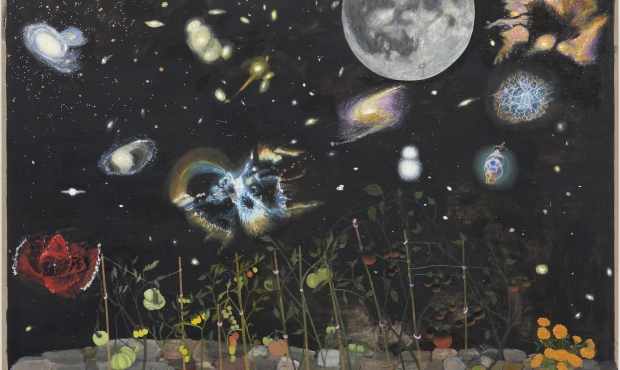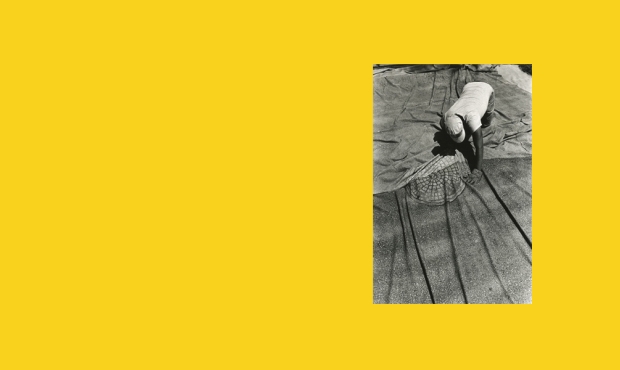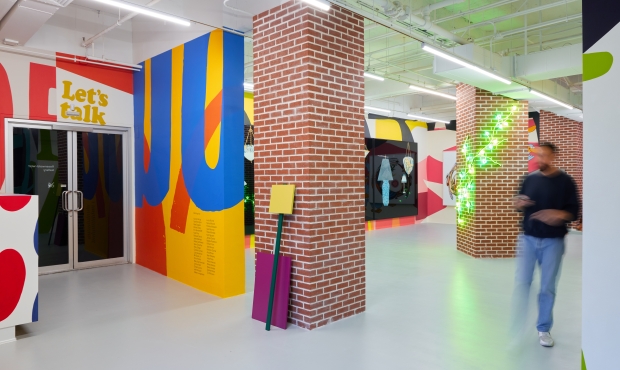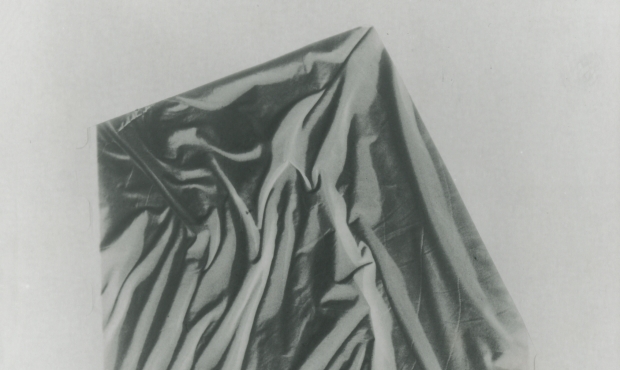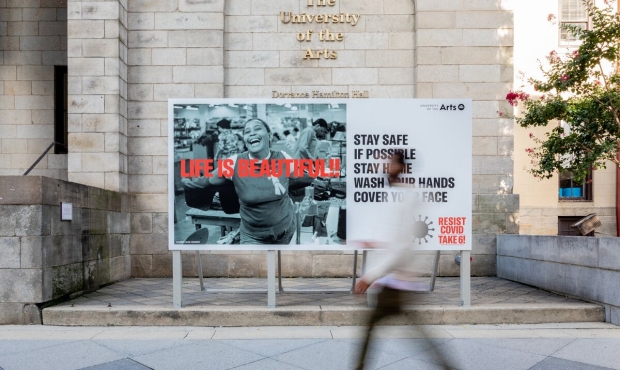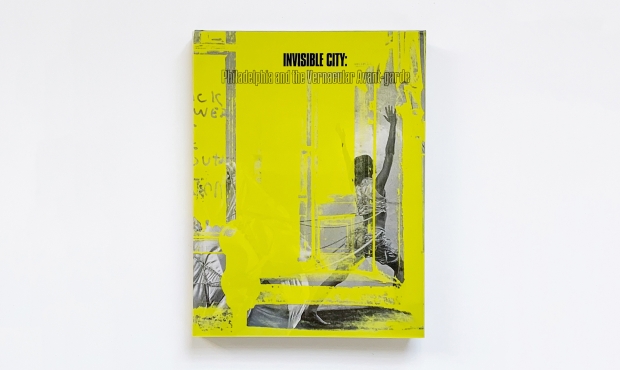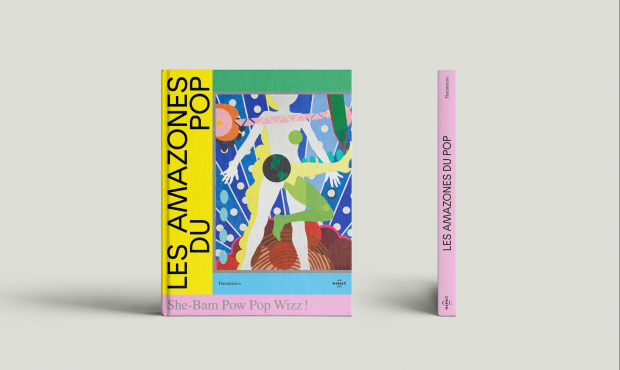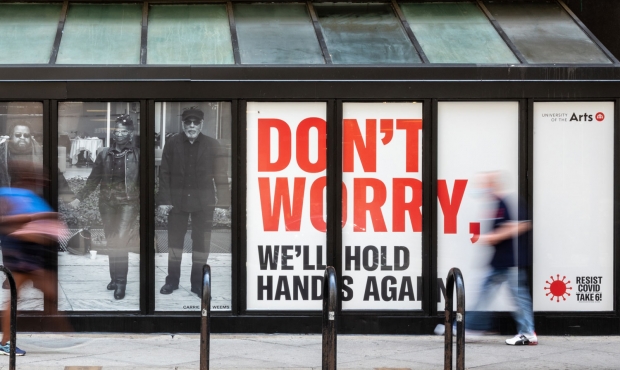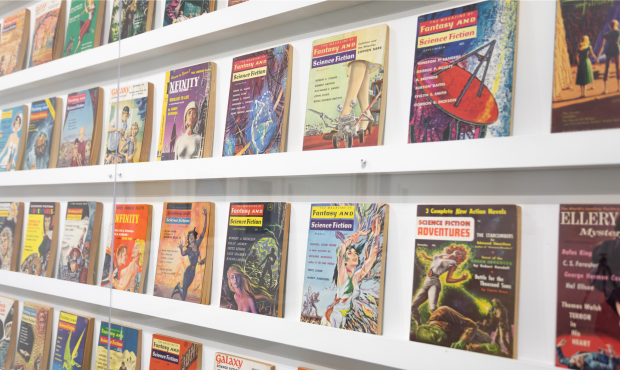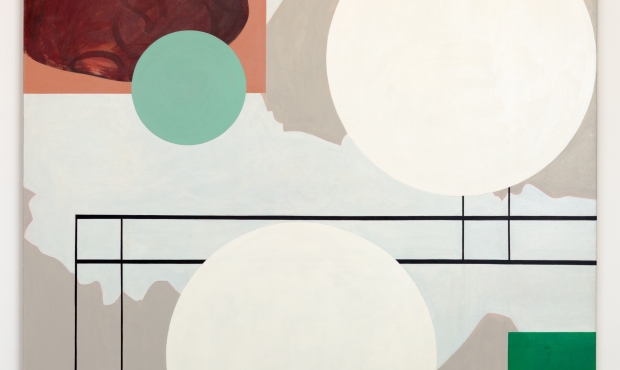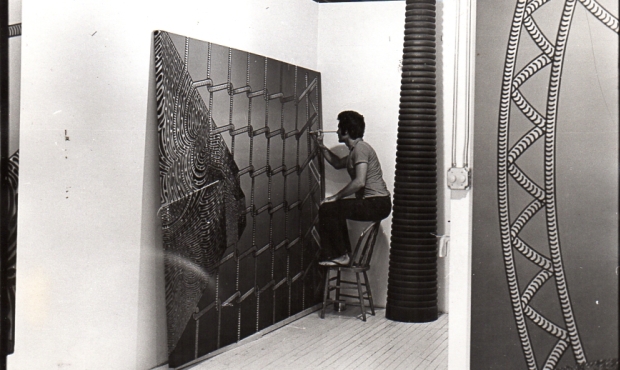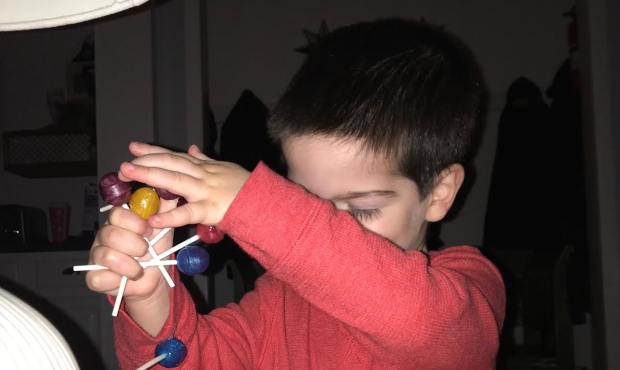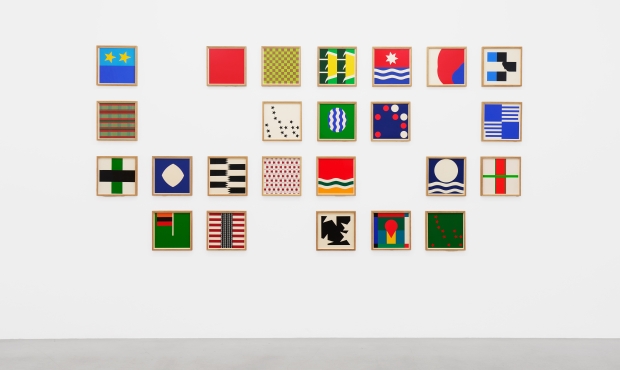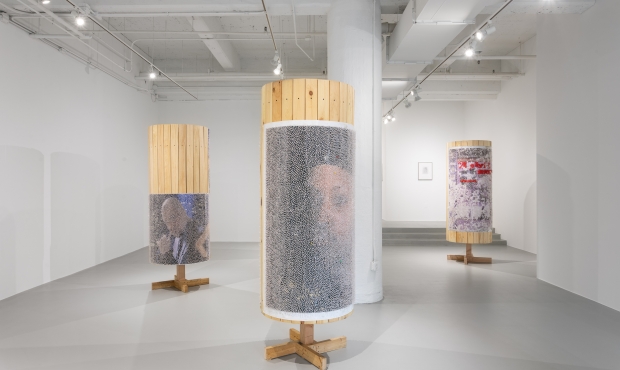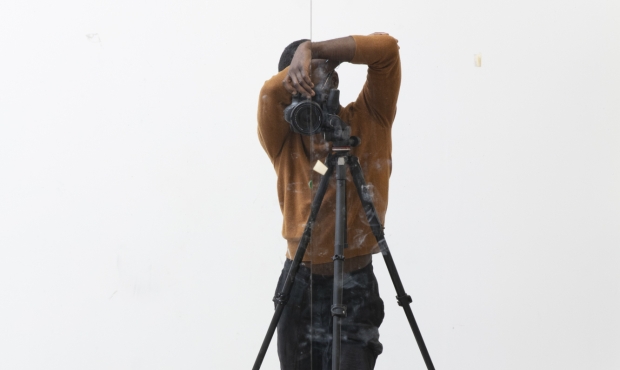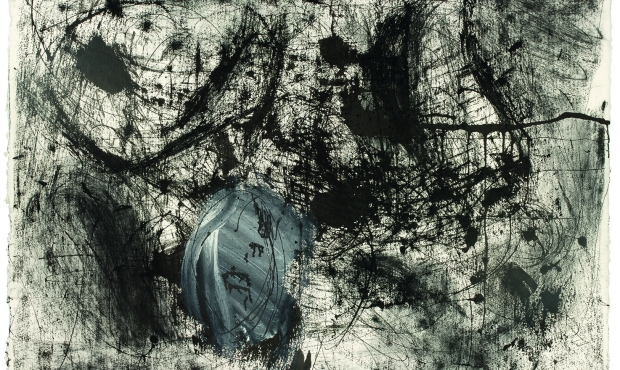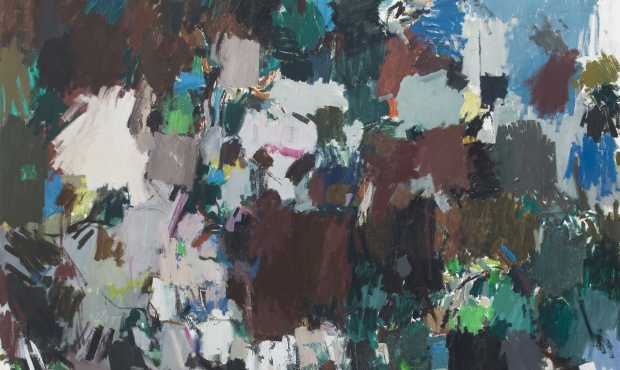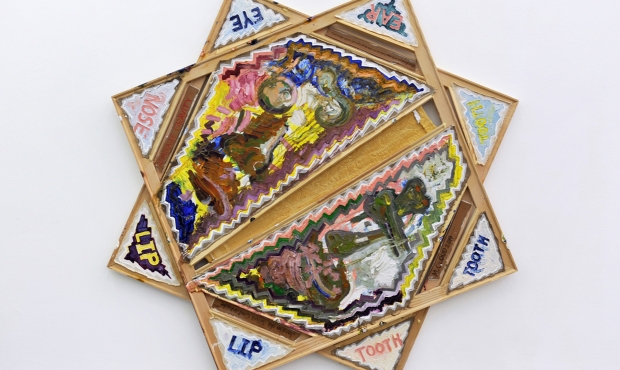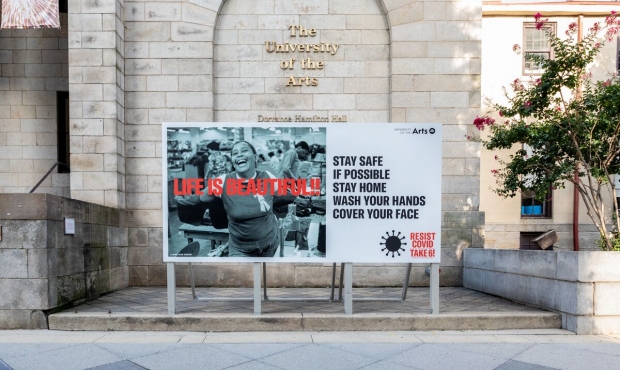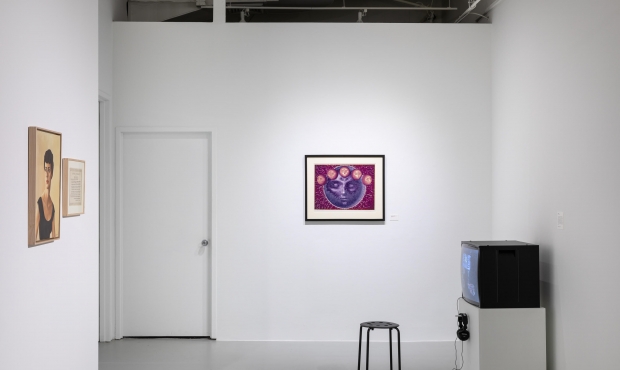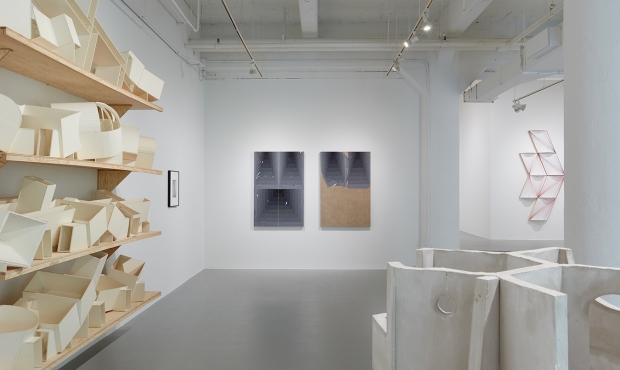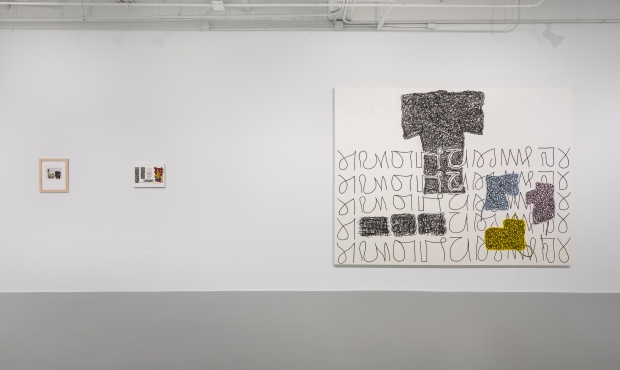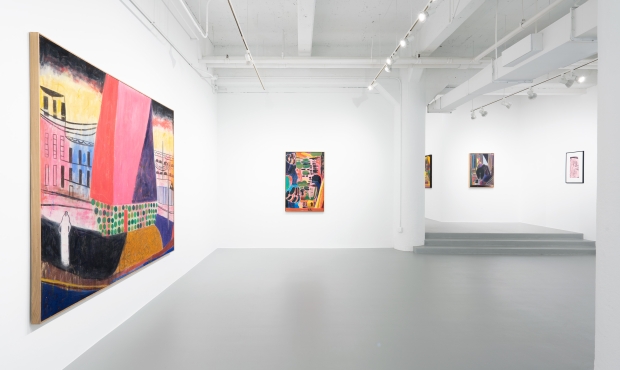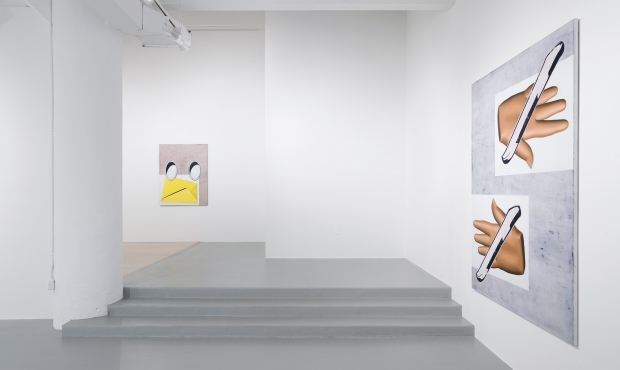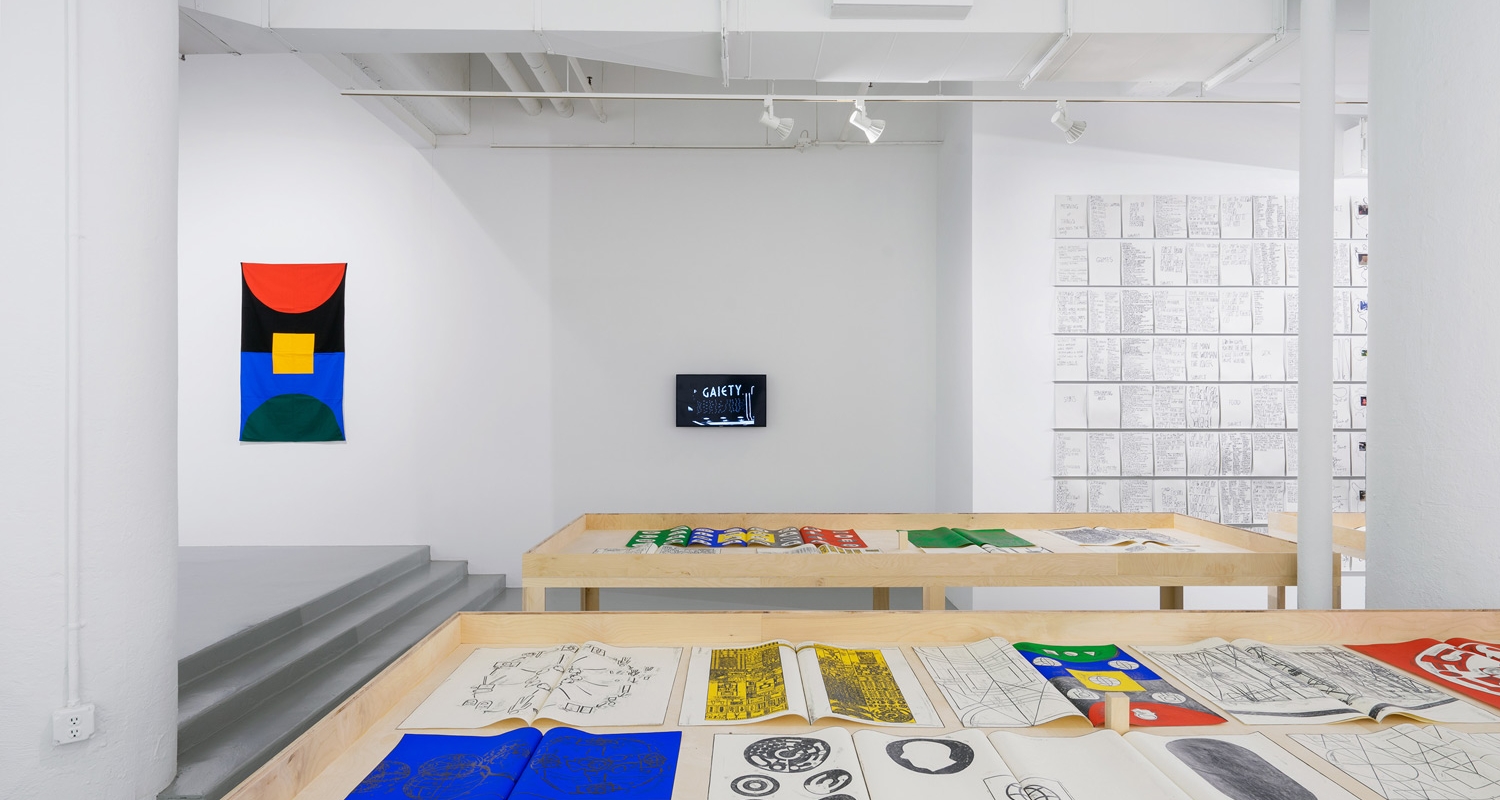
Rosenwald-Wolf Gallery
Matt Mullican (exhibited January 19–February 26, 2016); Courtesy of the artist, Mai 36 Galerie. Photo credit: Studio LHOOQ
Exhibiting national and international artists
**Please note our new summer hours: Open Tuesday-Friday, 10 a.m.-5 p.m.; Saturday and Monday by appointment. Closed Sundays.
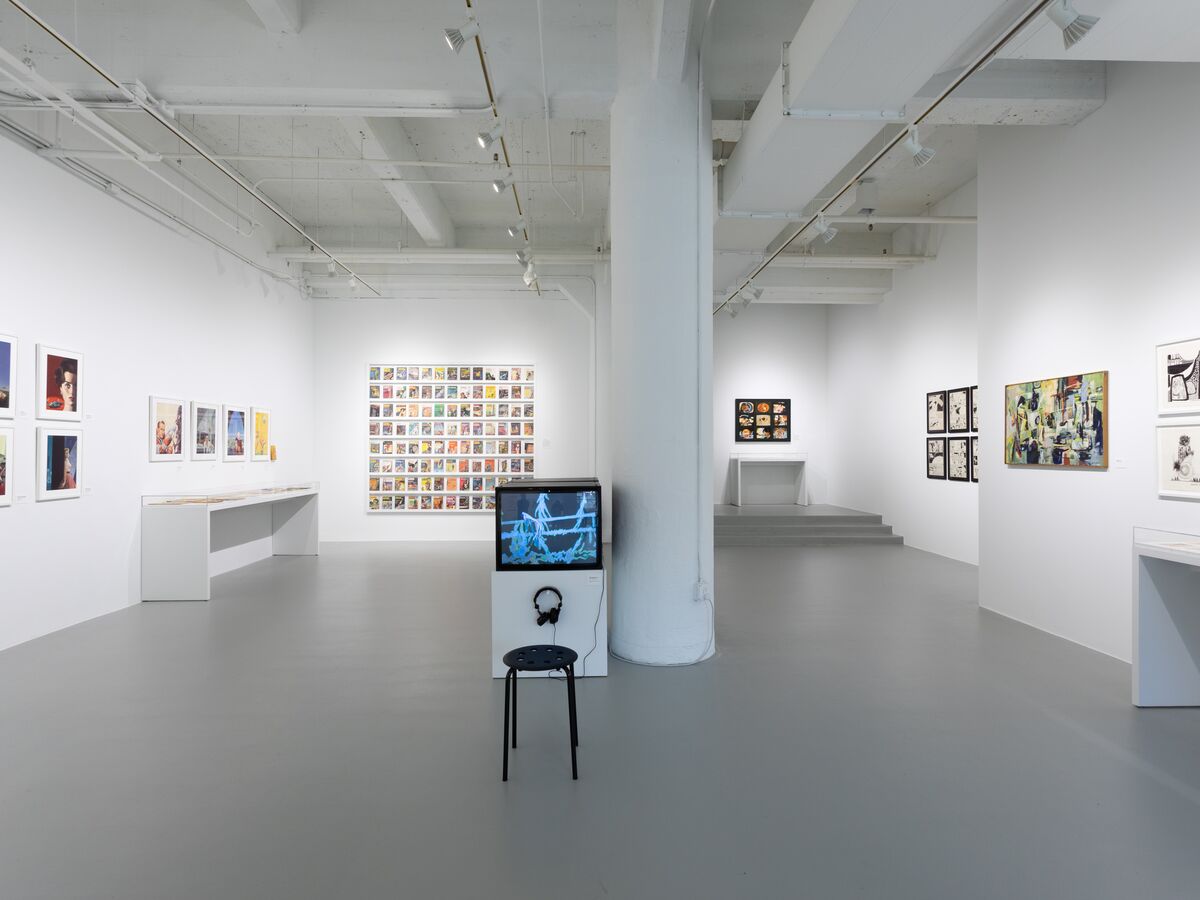
Dream Dance: The Art of Ed Emshwiller, Oct. 17–Dec. 7, 2019
About the Rosenwald-Wolf Gallery
The Rosenwald-Wolf Gallery is the primary exhibition space of the University of the Arts, located six blocks south of City Hall, across from the Kimmel Center. The gallery is free and open to the public. Noted projects of the Rosenwald-Wolf Gallery include Yvonne Rainer: Radical Juxtapositions 1961-2002 and Seductive Subversion: Women and Pop Art 1958-1968—both supported by The Pew Center for Arts & Heritage—which have won AICA Awards and been reviewed in major publications such as The New York Times, Boston Globe, The Philadelphia Inquirer, Artforum, Art in America, Artnews, Art History and Burlington Magazine, among others. Rosenwald-Wolf Gallery's exhibition Invisible City: Philadelphia and the Vernacular Avant-garde was also supported by The Pew Center for Arts & Heritage.
Visit & Contact
Rosenwald-Wolf Gallery is currently open and exhibiting Leidy Churchman. Please note our new summer hours.
Summer Gallery Hours:
Tues-Fri 10 am–5 pm
Sat & Mon By Appointment
Closed Sundays
Anderson Hall
333 S. Broad St.
Philadelphia, PA 19102
215-717-6480
rwg@uarts.edu

